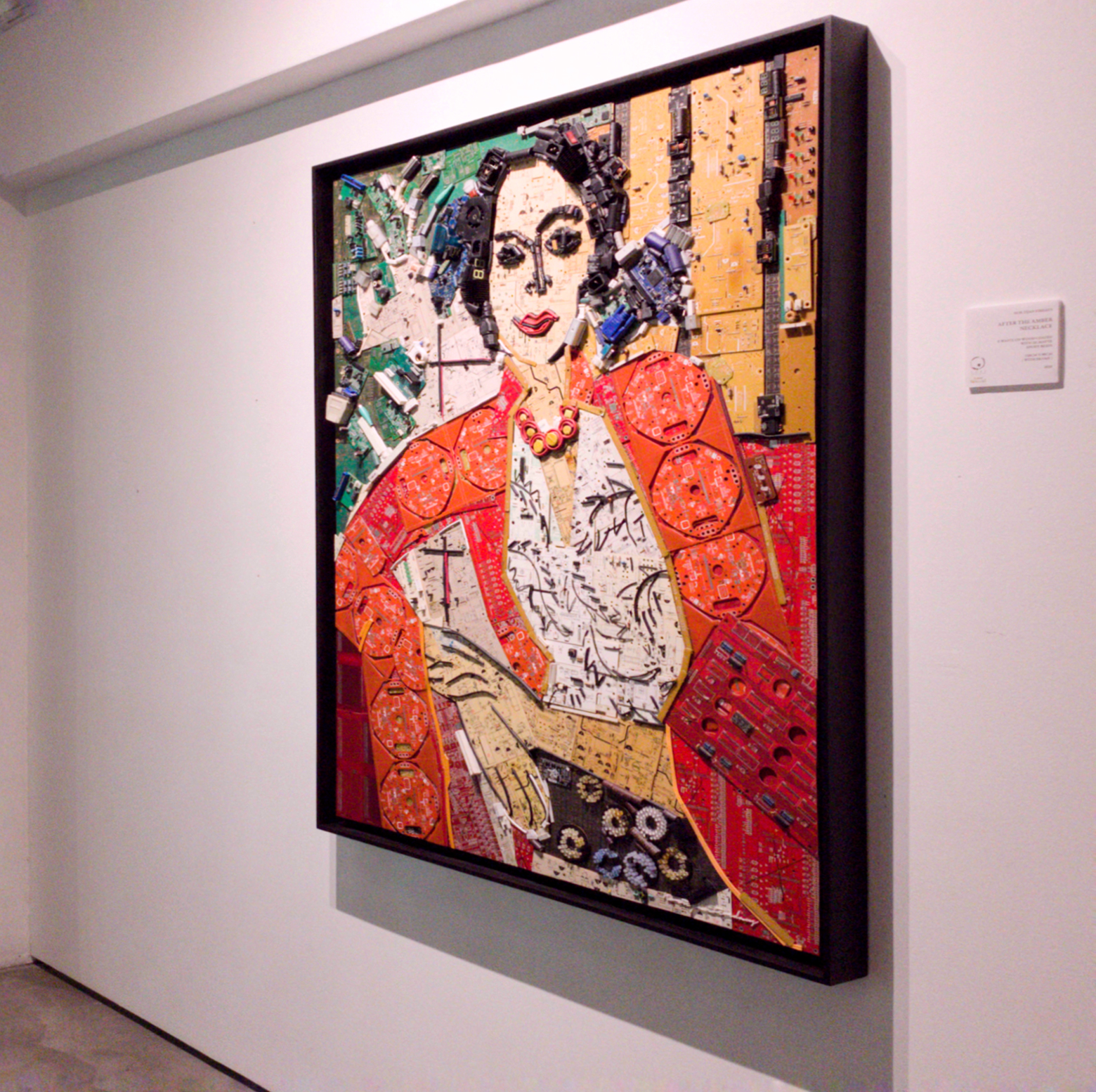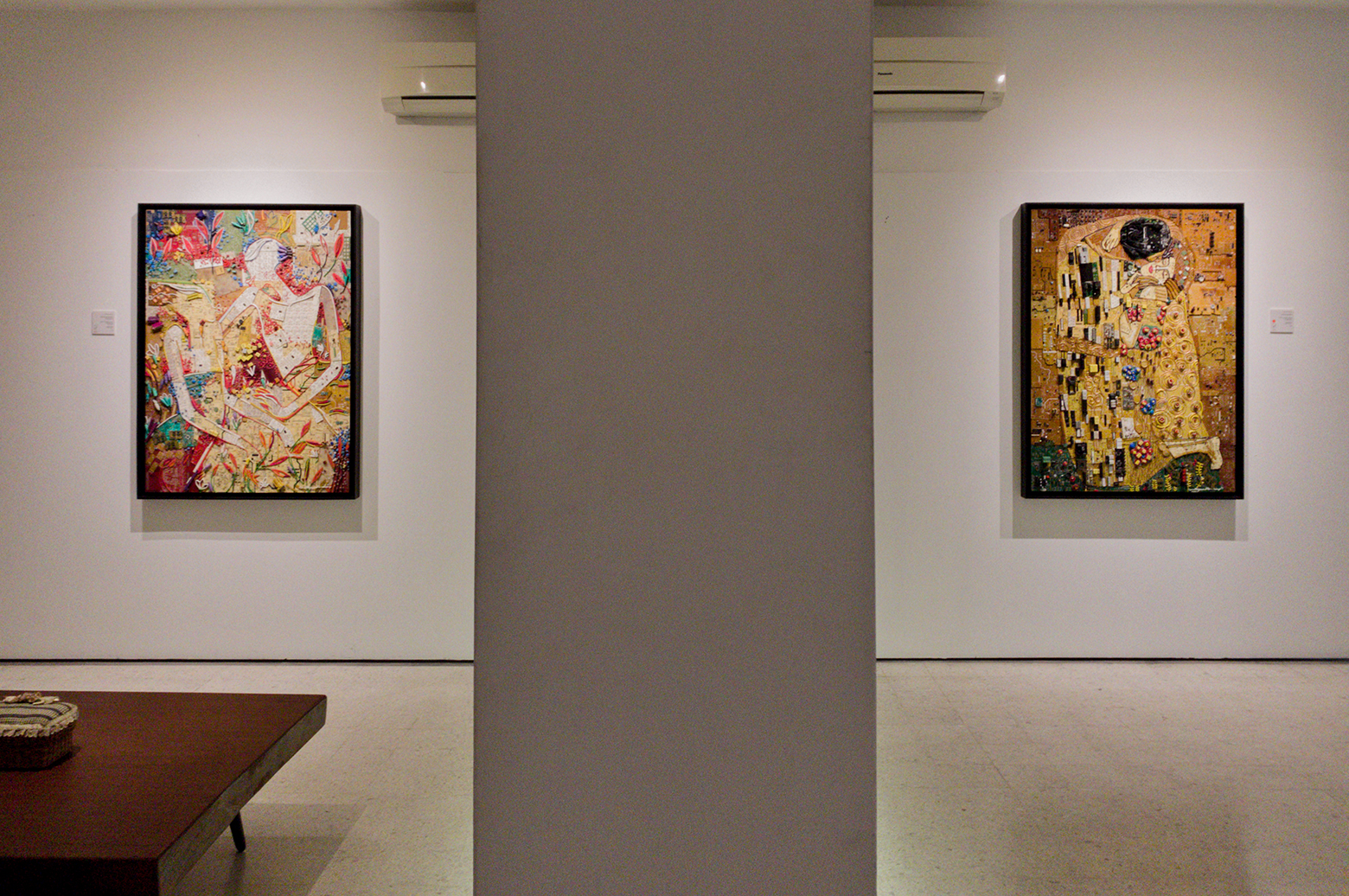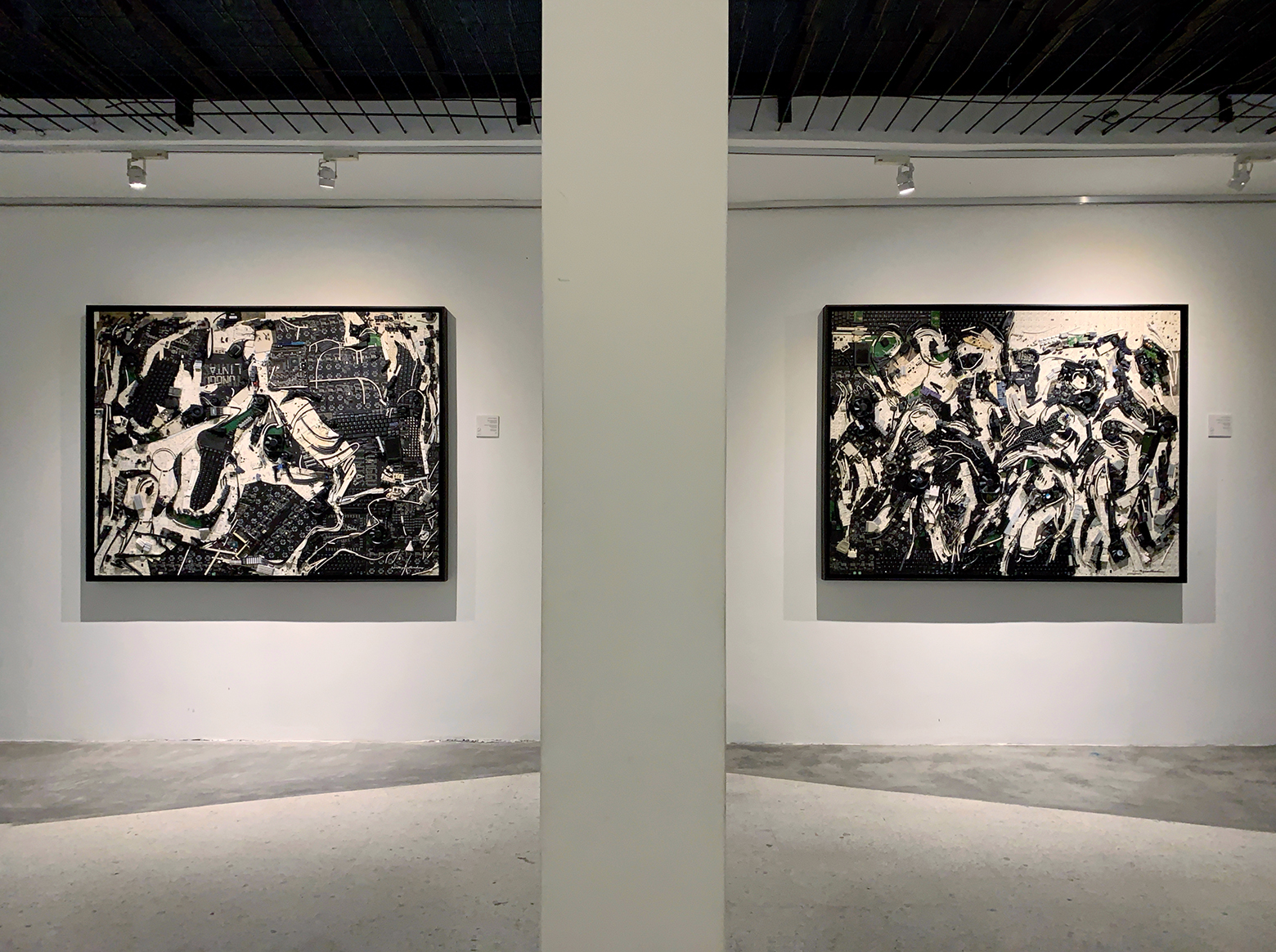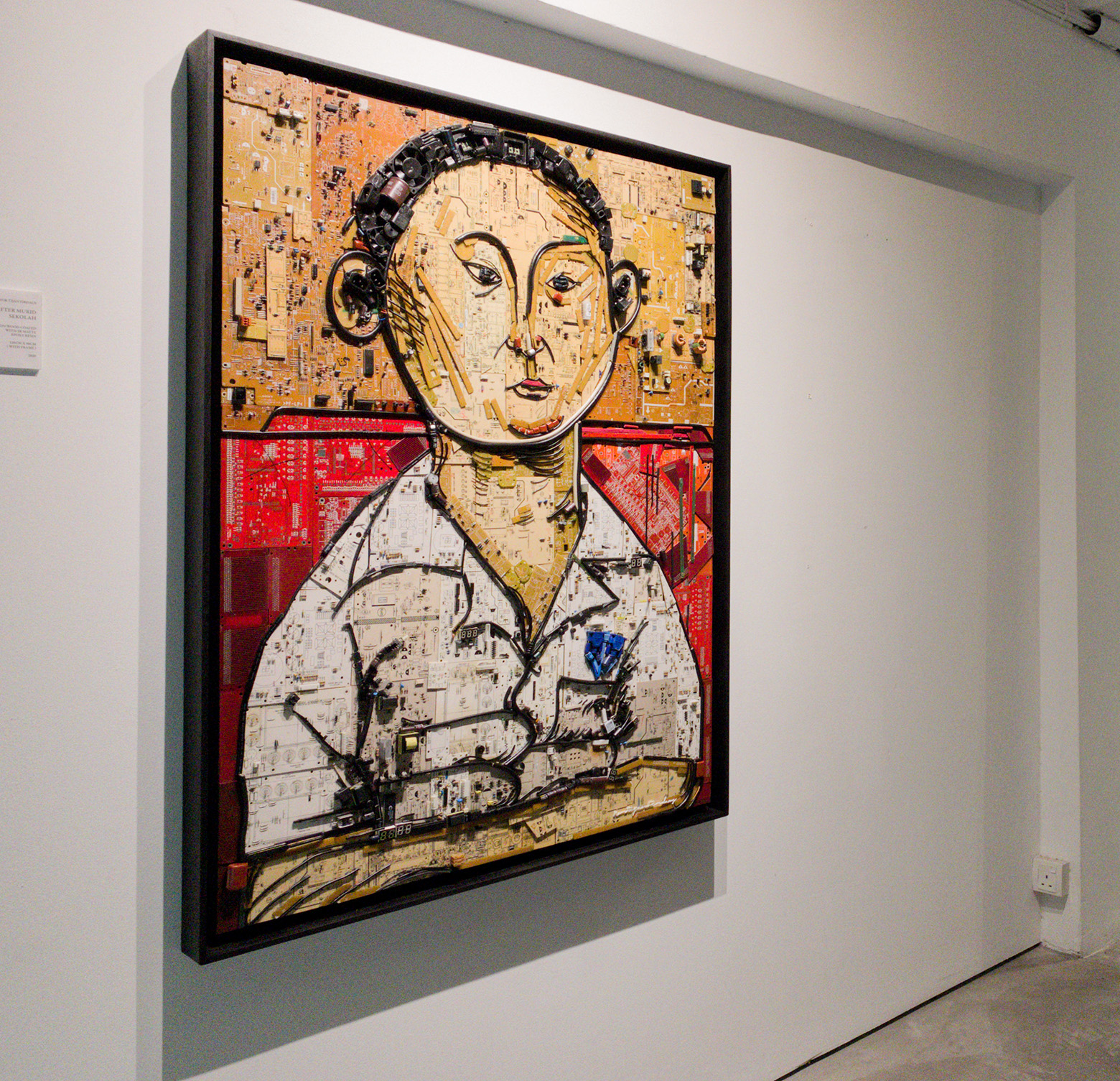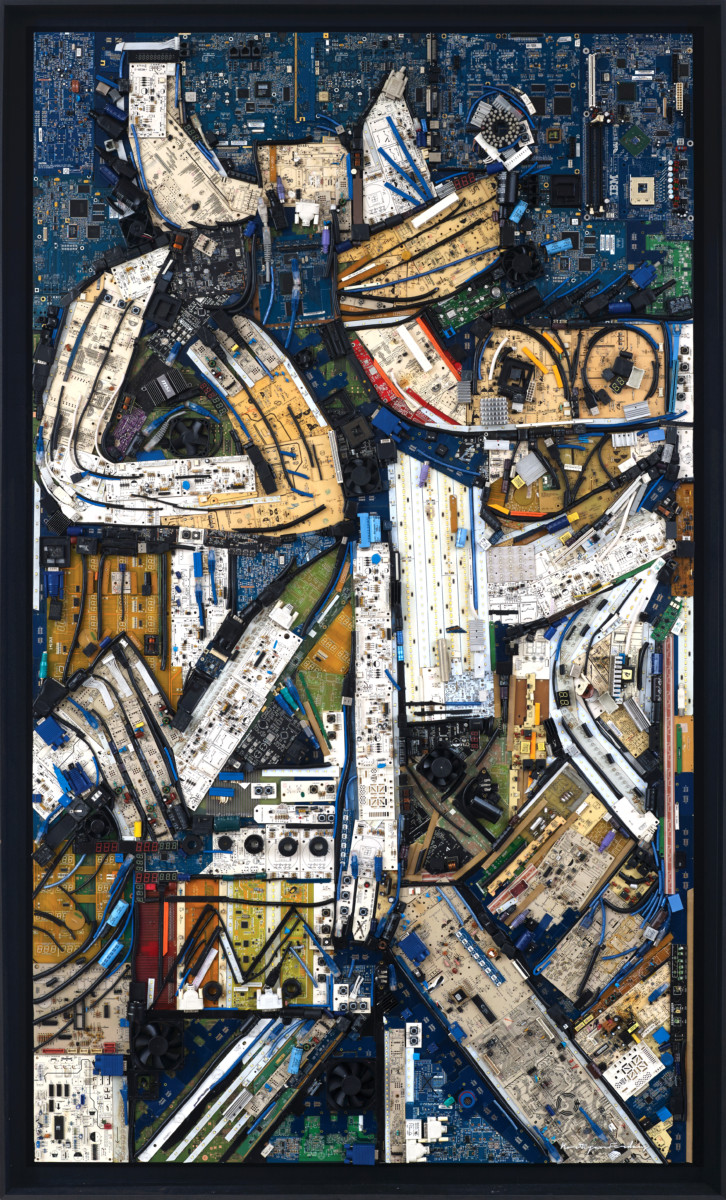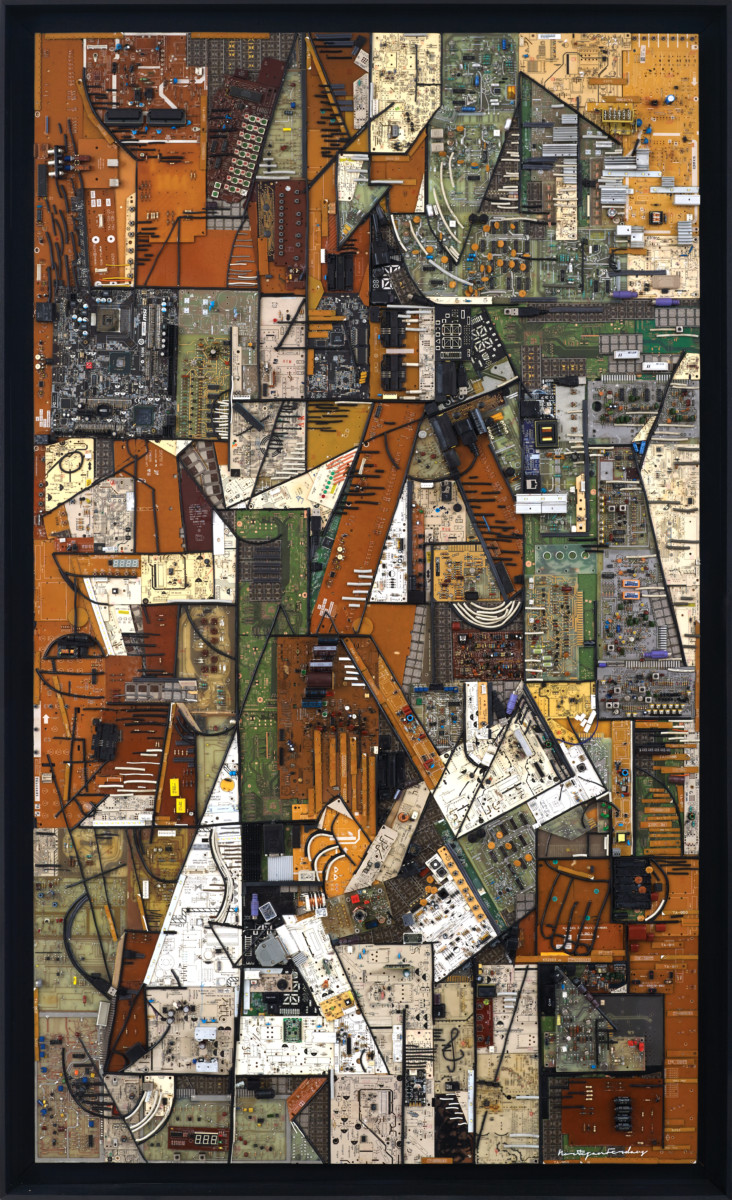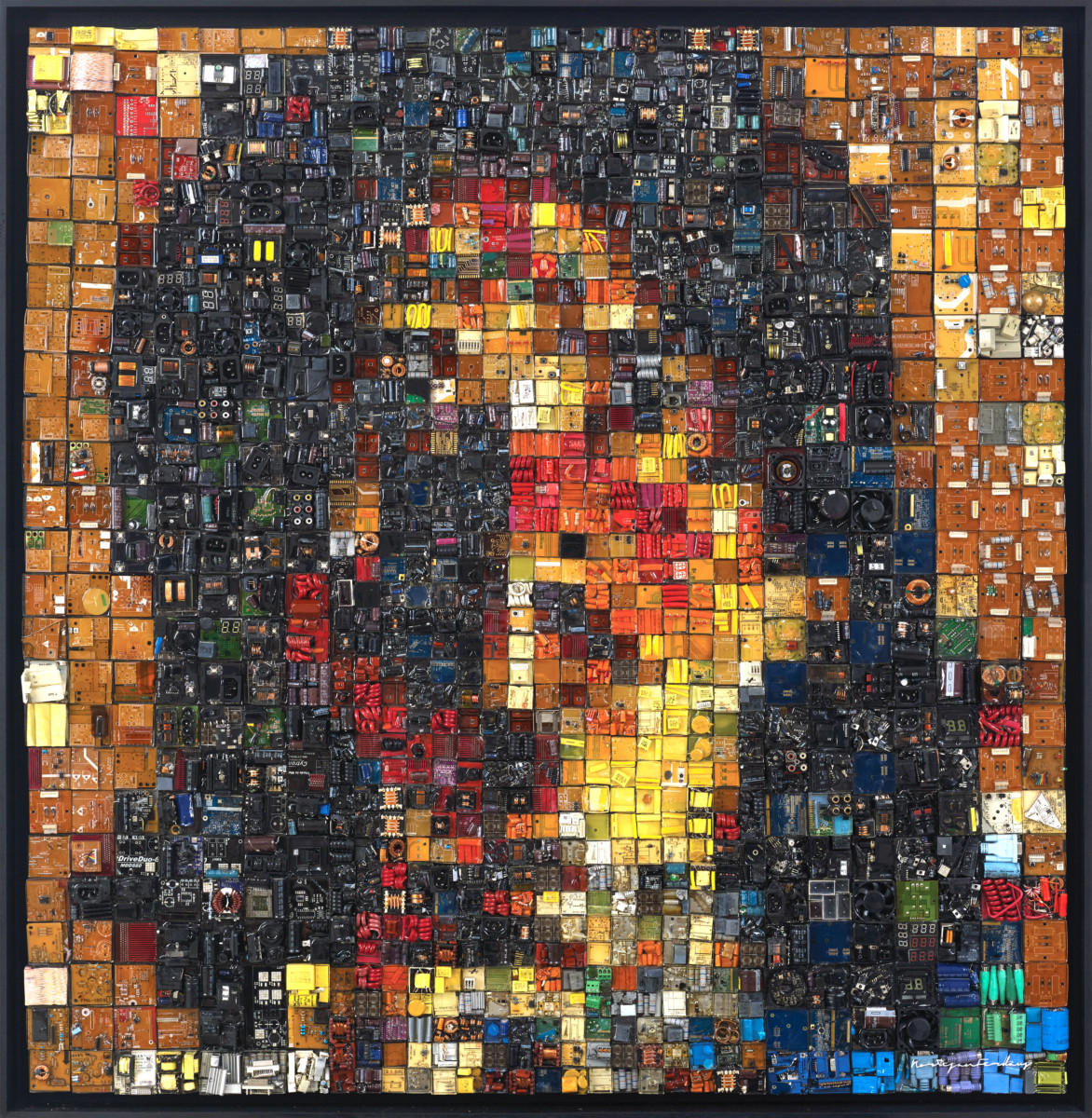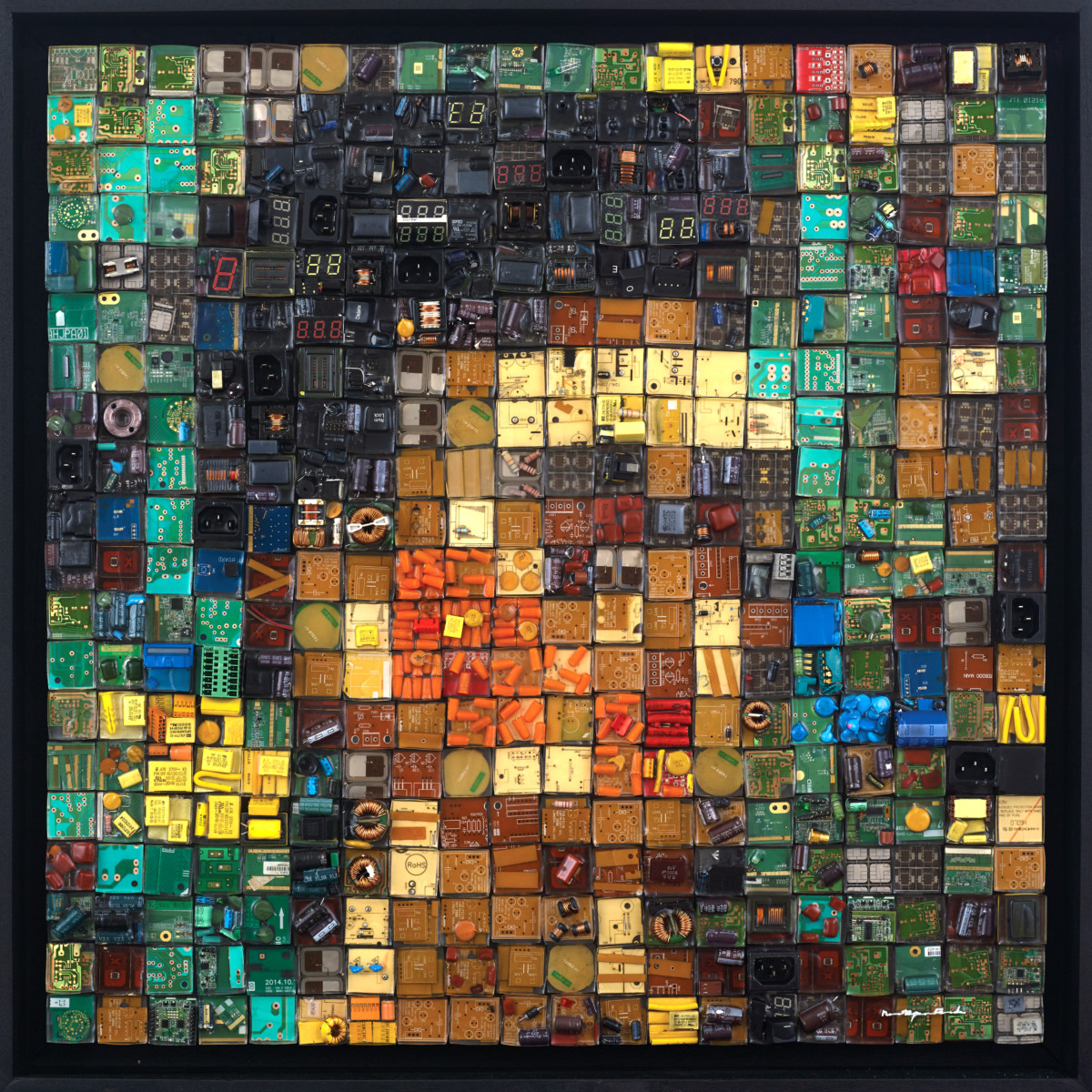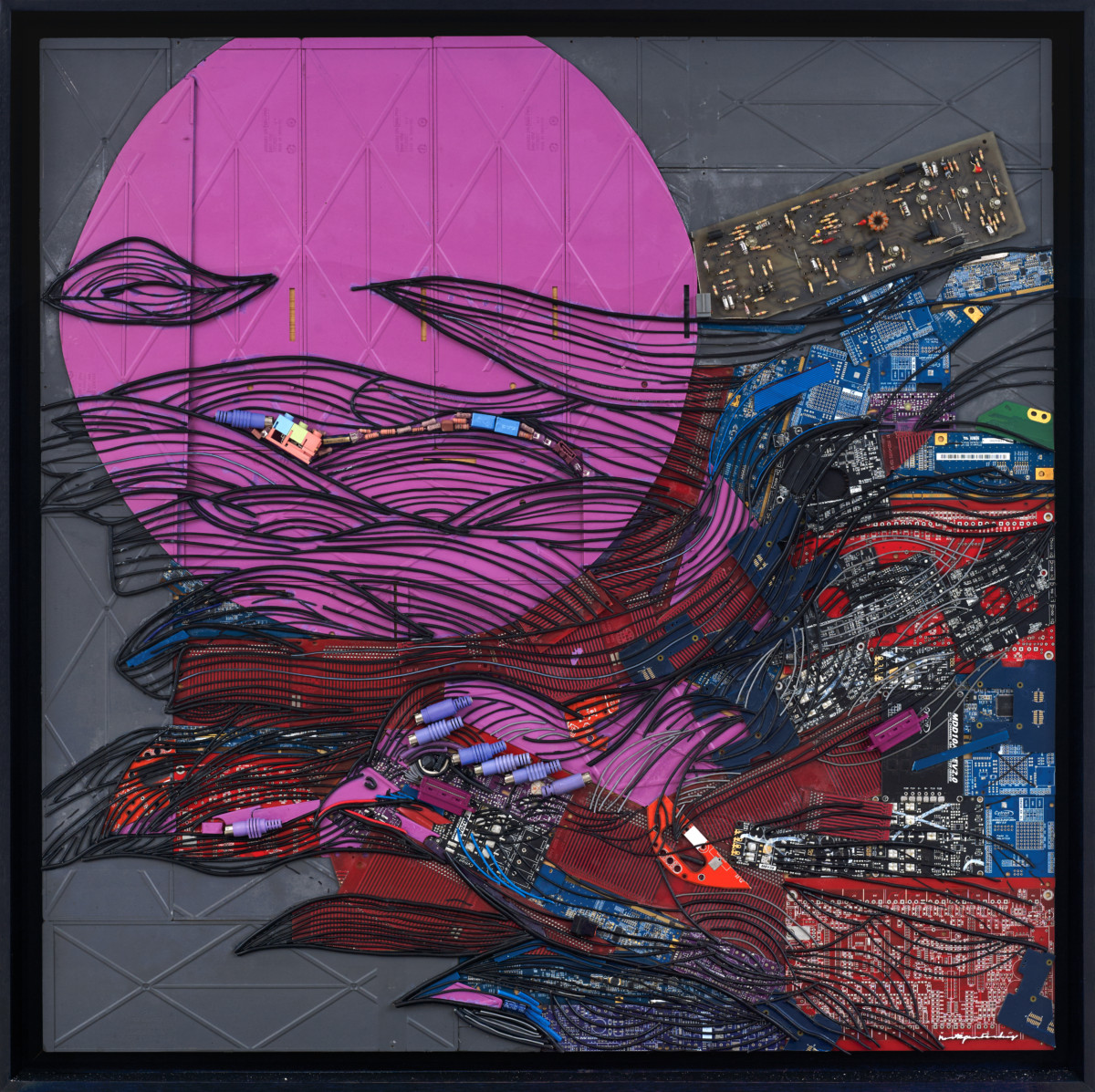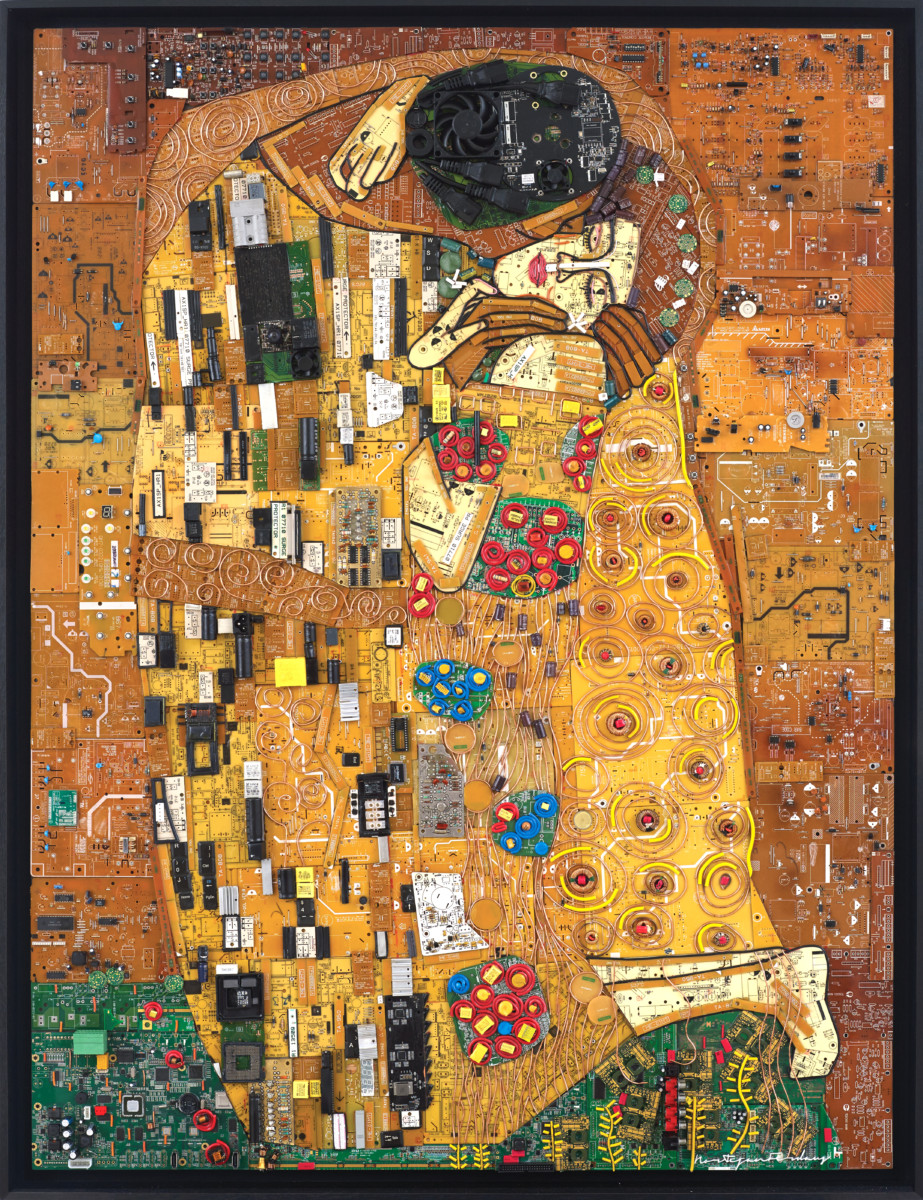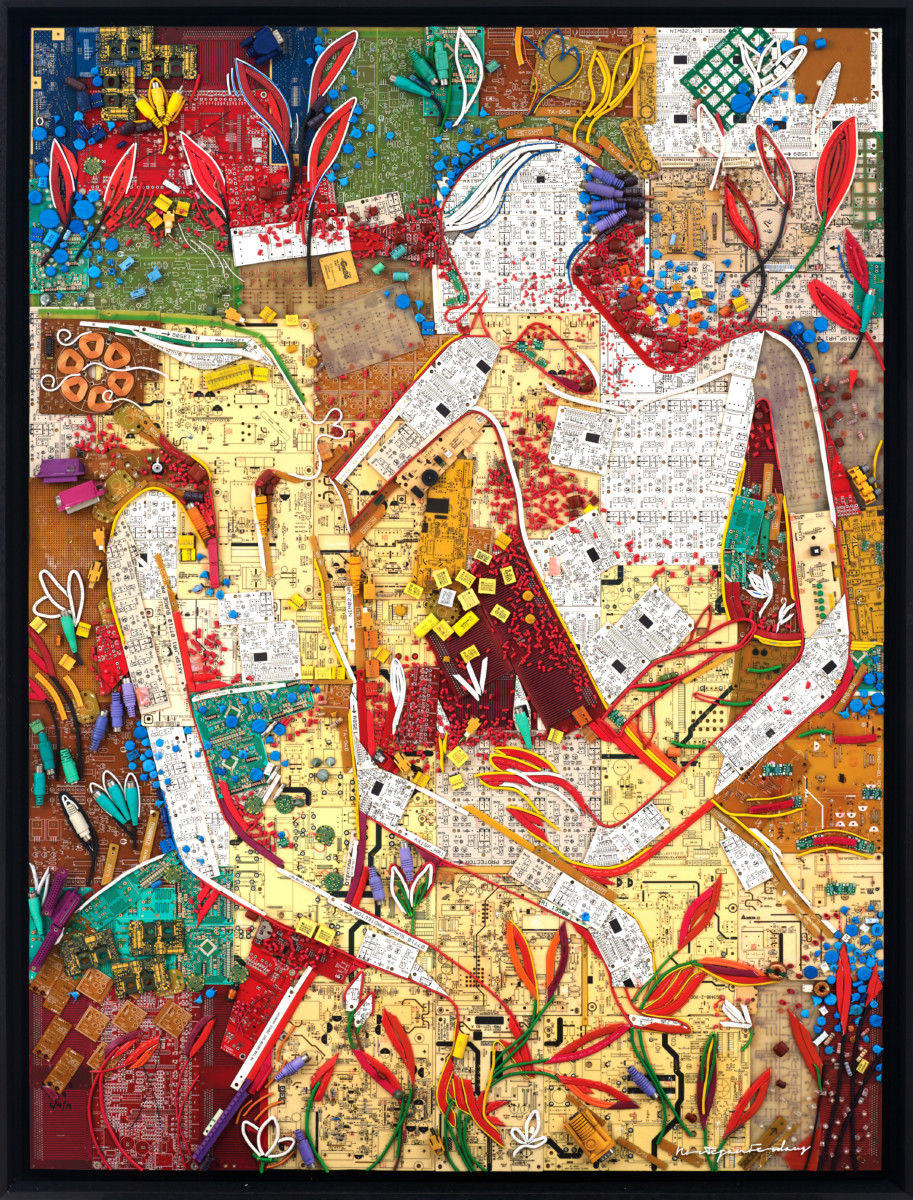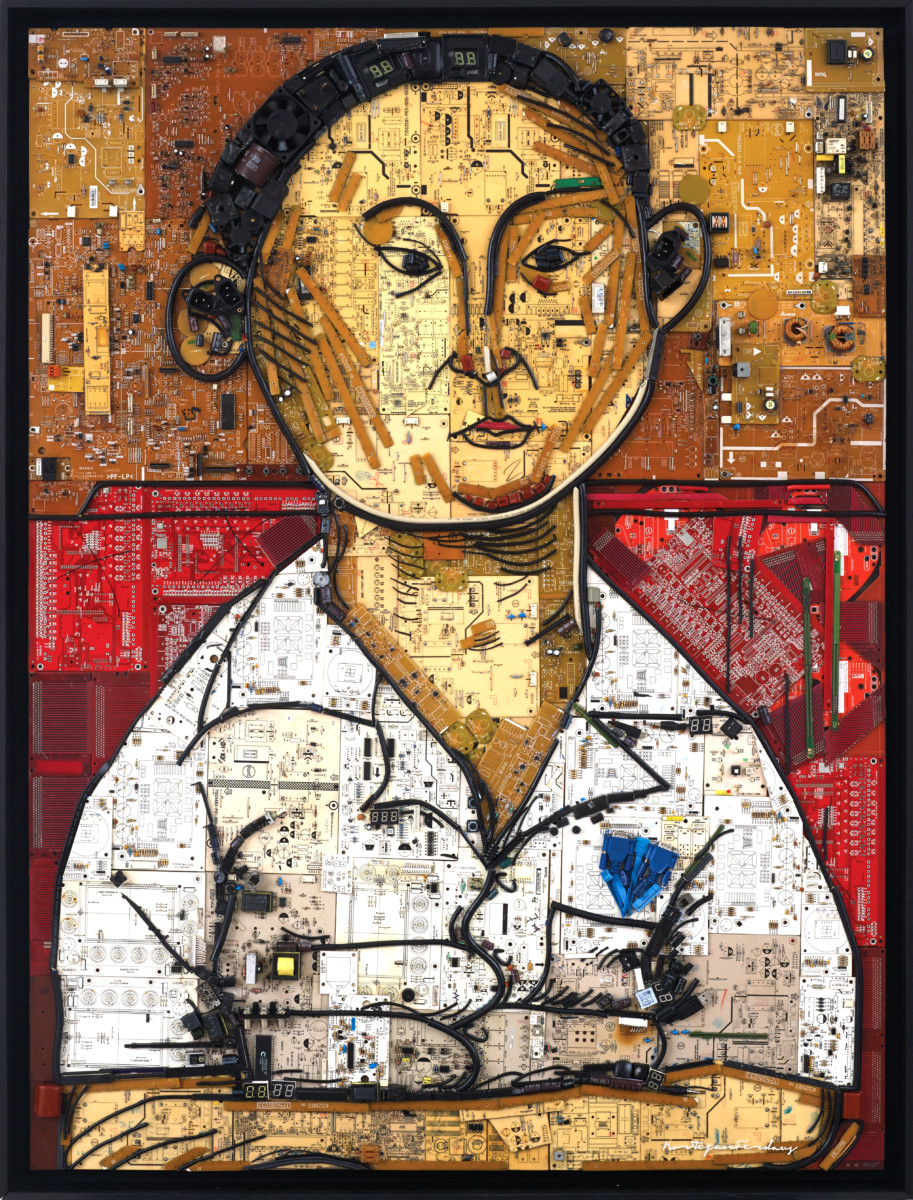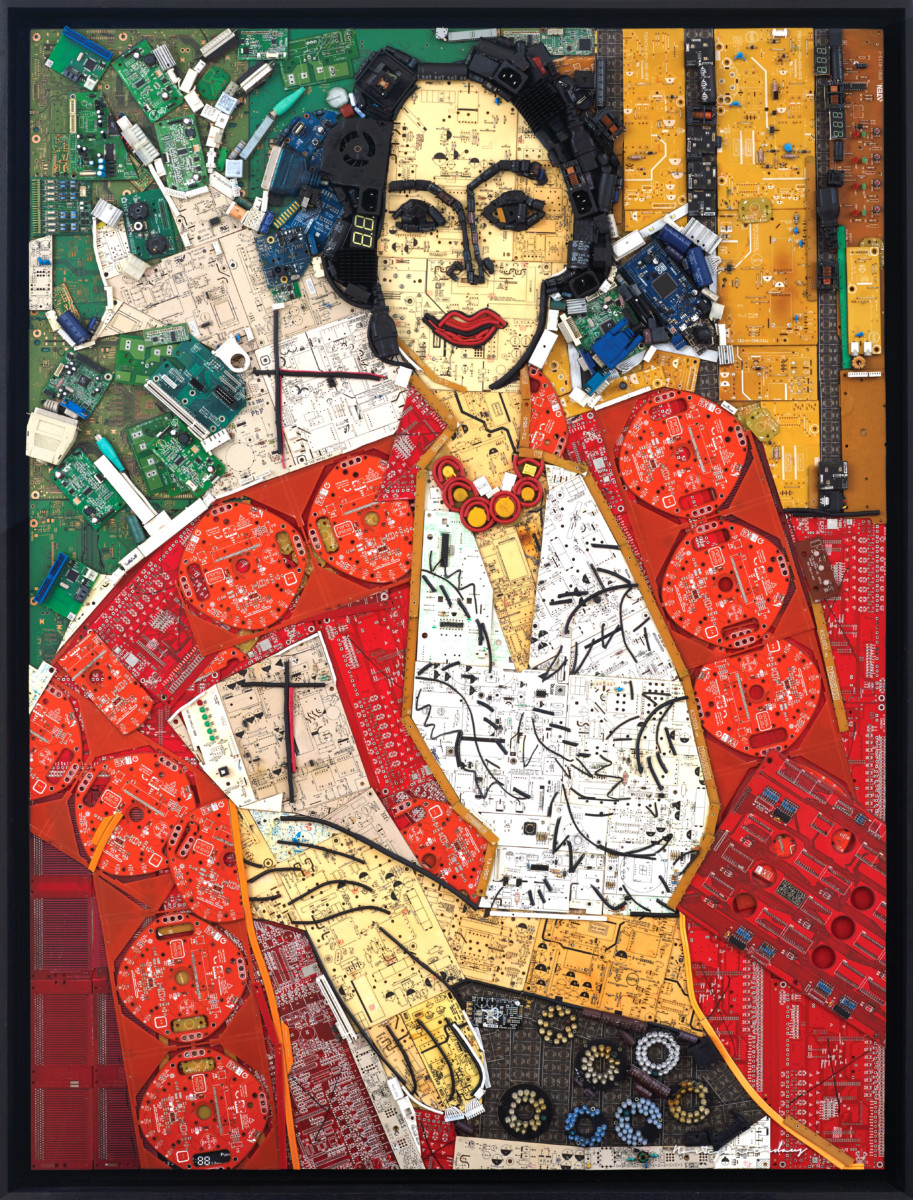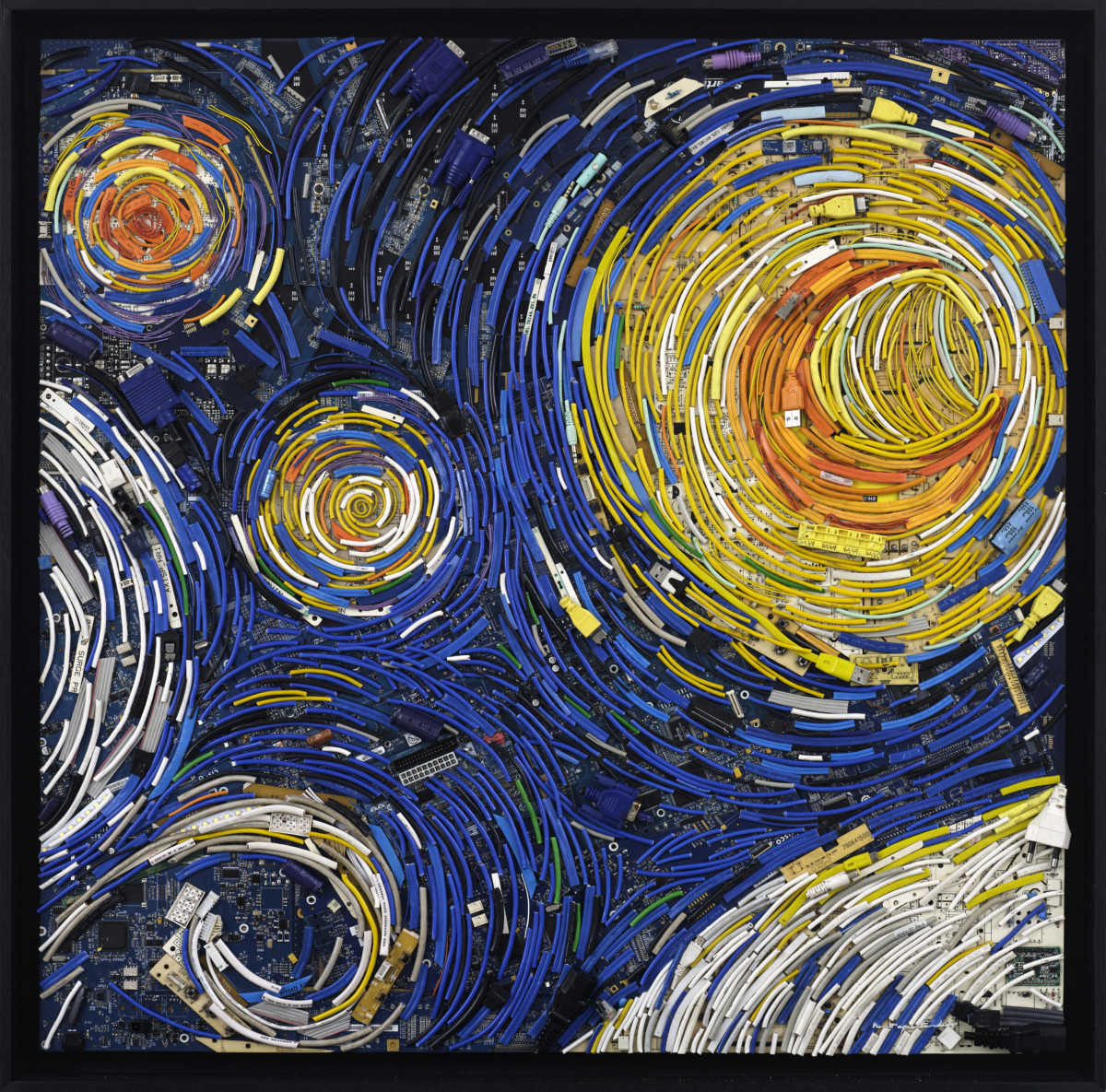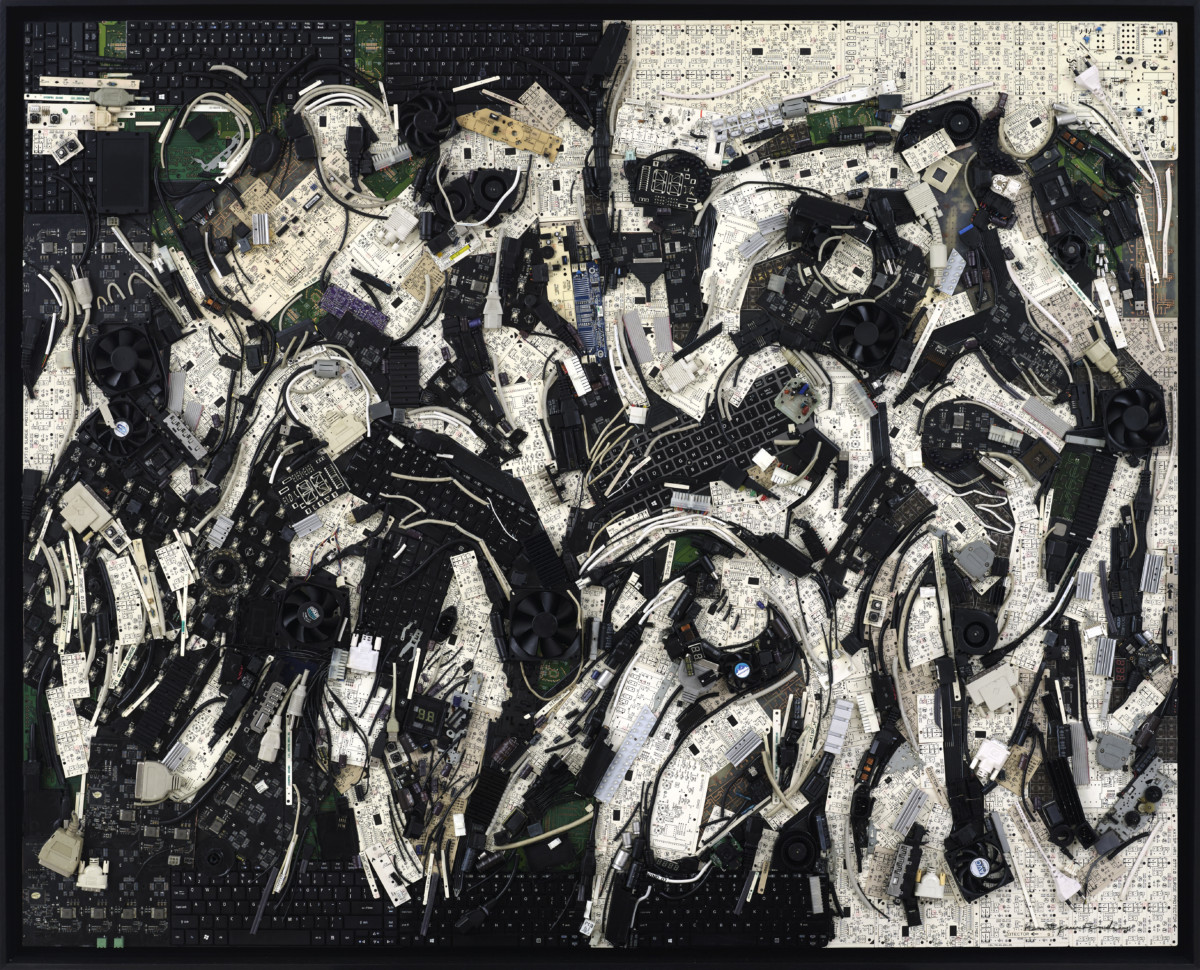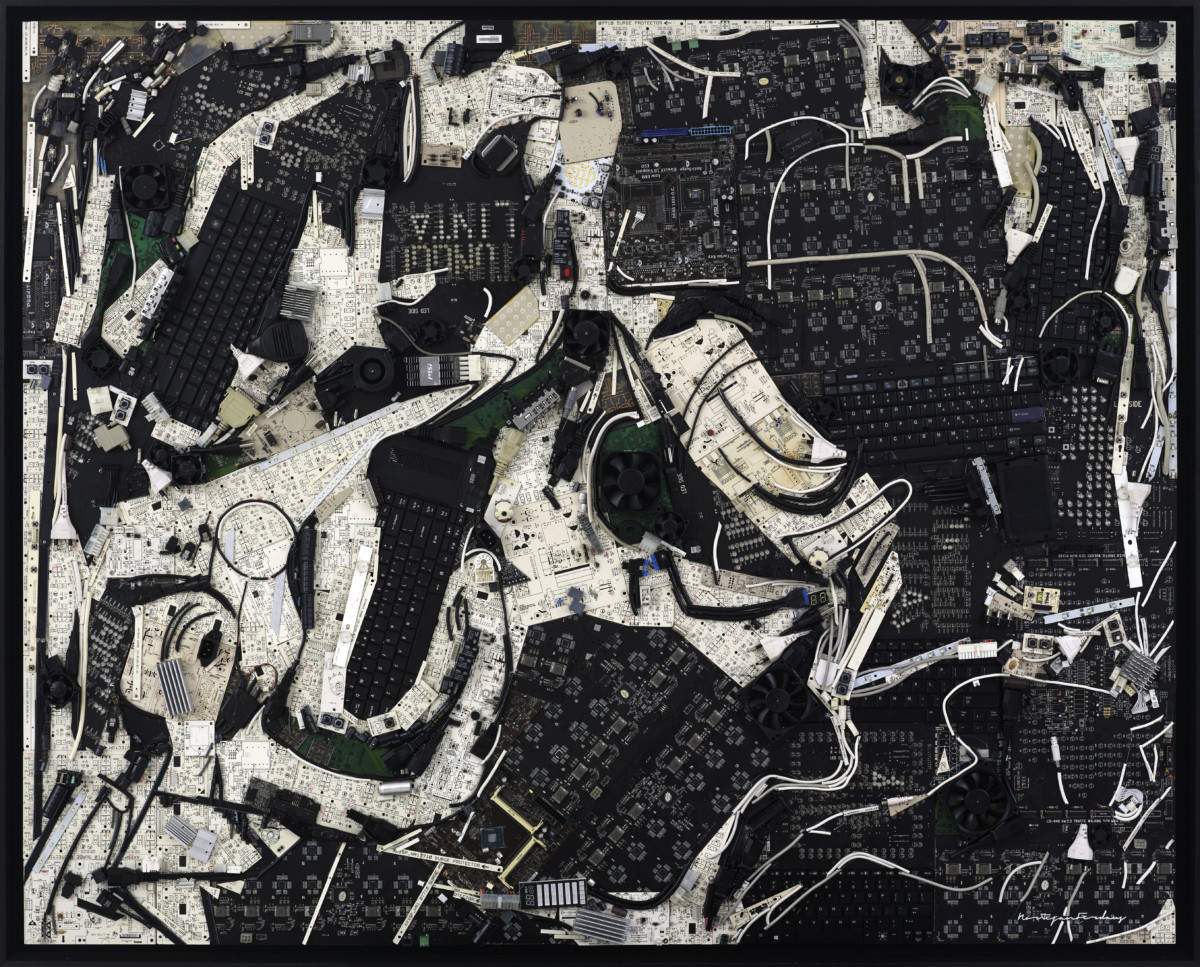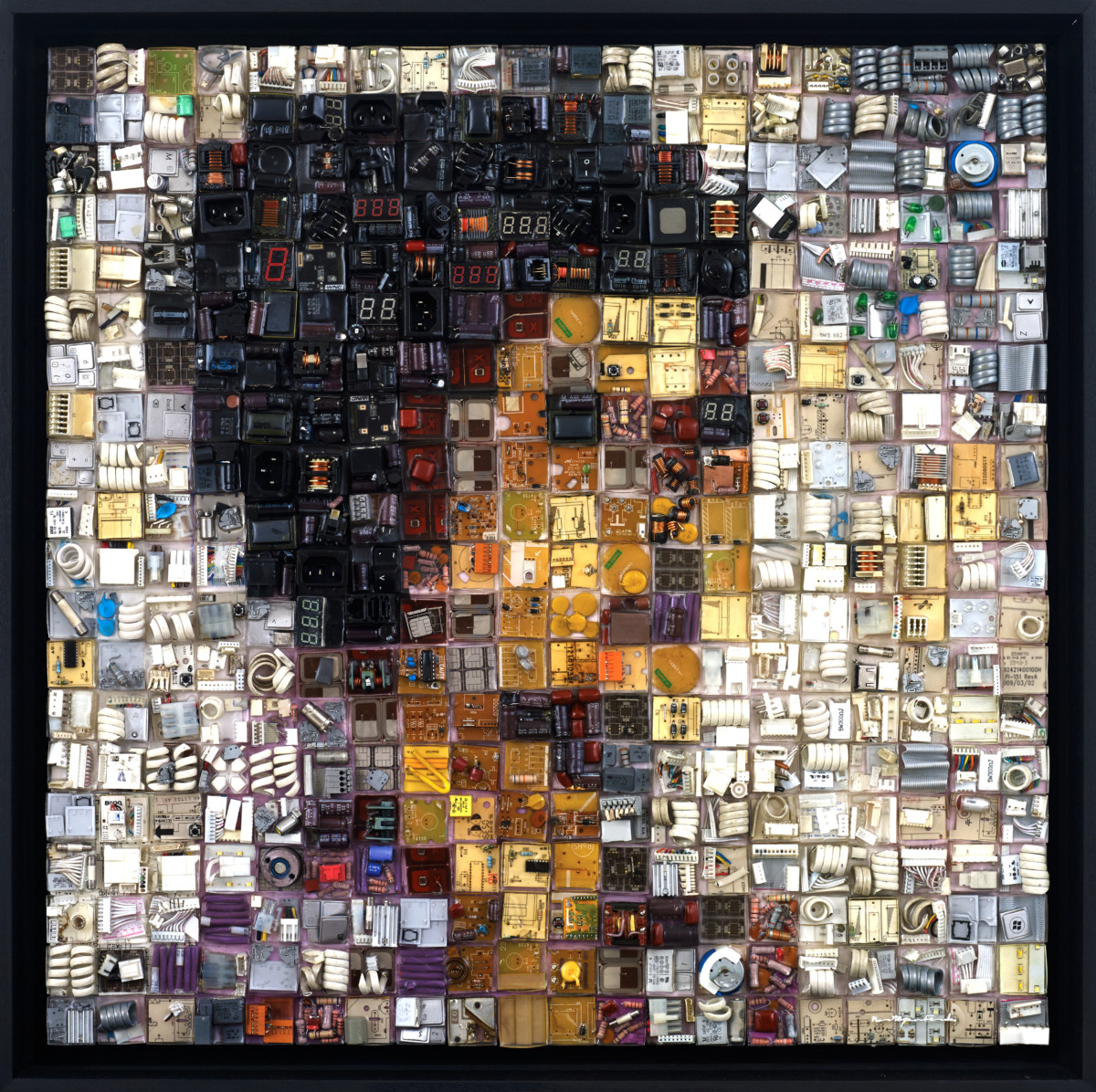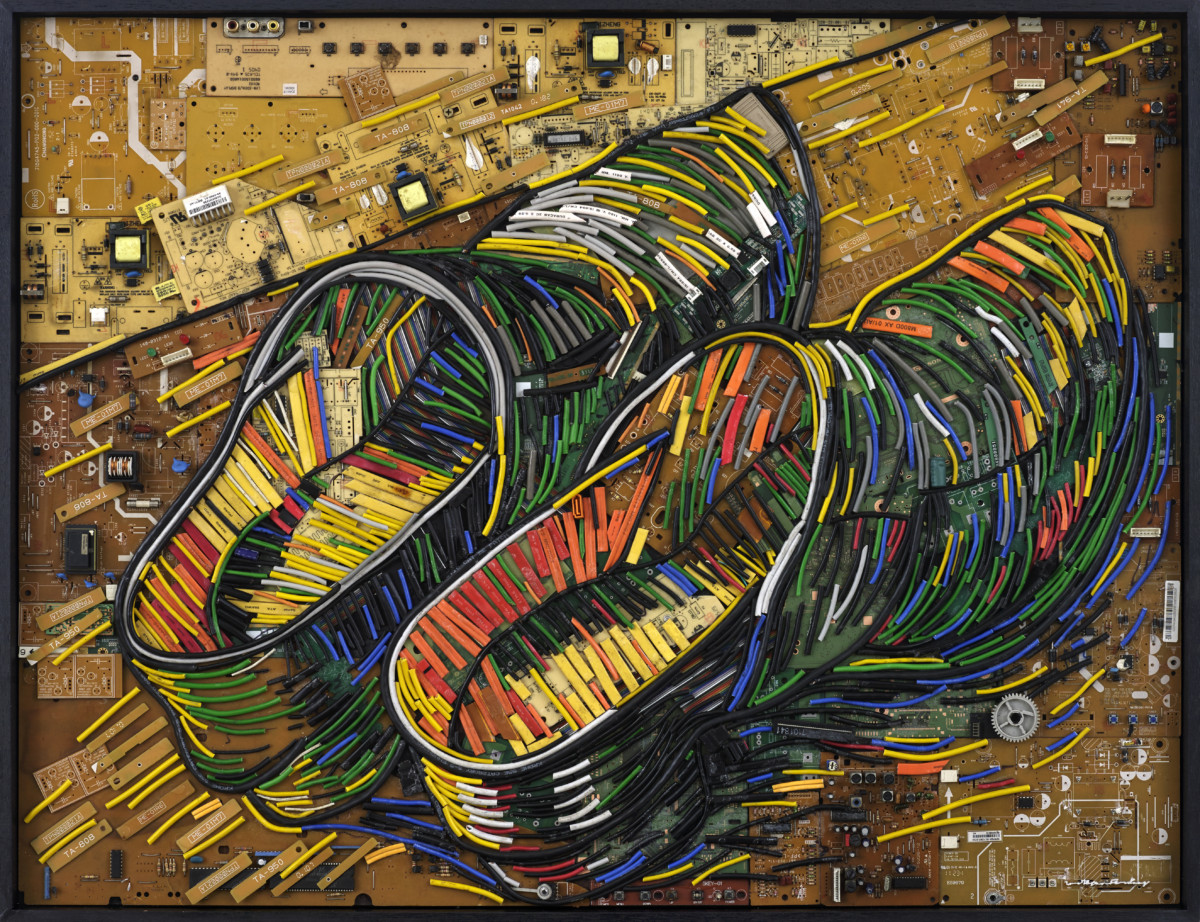New Formal
Solo Exhibition:-
Nor Tijan Firdaus
8th January – 6th February 2021
Core Design Gallery, Subang Jaya
*Click on images to zoom in
Rethinking the accepted global canon is highly topical in the art world today. Until recent times it was widely accepted that art history traversed a single timeline, contingent to developments in the western art world, with contributions from non-western art areas appearing at much later intervals. Yet as globalisation came to the art world, these notions quickly felt problematic, and were replaced with an understanding that western and non-western centres of art need to have equal but separate intellectual weights ascribed to them. With a ‘compare and contrast’ approach to famous artworks produced by western masters and Malaysian modernist masters, Nor Tijan Firdaus adds her voice to this ongoing debate through an inventive new medium – e-waste assemblages.
Recreating well-known artworks is not a foreign concept in the art world. Studying the works of masters and re-presenting them is often a key syllabus component in the early phases of most art schools, for it demonstrates and refines several strands of ability; chief amongst which are an understanding of art history and great formal dexterity. In fact much of the work that underpins Tijan’s current practice and ‘New Formal’ has roots in her years as an art student. Born in 1986 in Klang, Tijan graduated from UiTM with a BA (Hons) in 2010, with a major in sculpture and a minor in painting. Understanding her twinned interest in these two genres of art (that is, sculpture and painting) immediately reveal her capacity to build up easily readable, relief-like surfaces; the style that has become a signature in her practice. The ideas that emerge in ‘new formal’ can however be traced to a later point in her education, and are rooted in her time as Master’s student at UiTM (where she graduated from the Art and Design Faculty with an MA in Fine Art in 2015) – particularly with regards to her technical approach.
Recounting a seminar on sustainability in Art and Design that UiTM held during the early period of her Master’s, Tijan reflects on the profound effect it had on her. At the time of embarking on her Masters, Tijan had a young family at home, and was conscious of the amount of waste she was suddenly accumulating, especially in comparison to her life as a single woman. Questions of commercialism arose- how we buy, replace, and update not only technology such as phones and computers, but clothes, children’s toys, furniture. Most of these are objects of design, but sustainability was not one of the considerations in their design and production. Surrounded by these objects, most of which were expected to be disposed of, Tijan wondered if at the end of their intended usefulness she could find a new use for them- as works of art.
Reassessing post-consumer material intended to be waste immediately provides broader critical context to Tijan’s practice. Sifting through materials sourced from her own home, or purchased from friends and recycling and waste plants, she generates commentary into sustainability, materialism and also post-formalism. Electronic waste in particular, with its strong colours and minute detailing, become a base material from which she builds up forms and aesthetics to speak about the Malaysian condition. In this sense, New Formal feels like an apt title, as Tijan seeks new ways to engage with the traditions of sculpture and assemblage art.
Reconfiguring accepted traditions in making art bleeds into the contextual framework of New Formal as well. Thinking back to the ways in which she was encouraged to practice technique through recreations of famous artworks, she wonders why the mind immediately travels to works of western masters? This question feels particularly pertinent when thinking of the fact that Tijan is an artist who has always lived, studied and practiced in Malaysia. The immediate answer seems to be that the global art canon is skewed towards western art histories. In New Formal, Tijan juxtaposes well recognised imagery from western art history (think of Gustav Klimt’s The Kiss or Frida Kahlo’s Self Portrait with Bonito) against artworks from Malaysian modernist masters, finding visual similarities. The cubic forms that build Pablo Picasso’s Ma Jolie emerge in Latiff Mohidin’s Pago Pago 1966, while decorative gold traverse across both Gustav Klimt’s The Kiss and Syed Thajudeen’s endearing thoughts. An abstracted mosaic approach comes through in a recreation of Ahmad Fuad Osman’s “Syhhh…”, which brings contemporary Malaysian artworks into Tijan’s discourse.
At first glance, New Formal feels strongly familiar. This is due to the popularity of the works selected, which often come up in lessons and discussions on art history. Yet through an entirely new medium of e-waste assemblage, using materials sourced from local waste, Tijan frames her body of works in the local context. Conversations on sustainability and investigations into restructuring how the global art canon is read have a strong life in today’s world. By tying them together Tijan demonstrates how art and life, for her, are intertwined, with a greater responsibility to shaping the ways in which audiences interact with art through their own lived experiences.
written by zena khan


